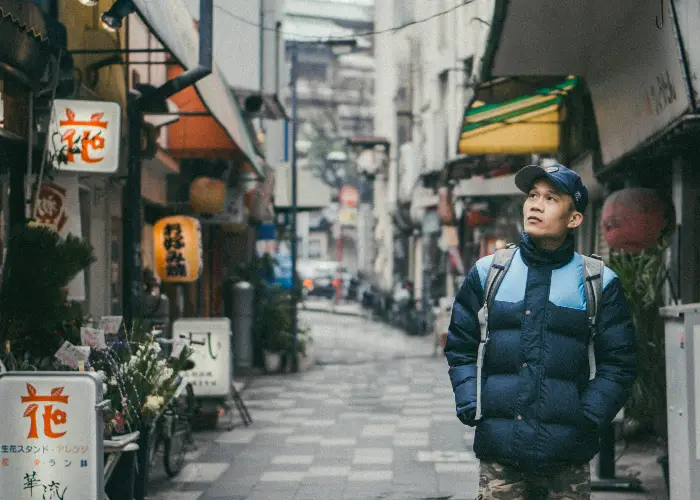Introduction: Feng Shui and Its Role in Japanese Society
Have you ever found yourself engulfed in tranquility upon stepping into a Japanese garden or even simply browsing through pictures of one? That feeling isn’t just a coincidence. It’s all thanks to the age-old practice of Feng Shui, even though you might not have realized it!
Feng Shui is an ancient Chinese philosophy that emphasizes living in harmony with your surroundings by influencing energy flow. This fascinating concept has long been ingrained in Japanese society, shaping everything from entire landscapes to the arrangement of furniture within homes.
In our relentless pursuit of progress and modernization, we often forget the cornerstone of Japanese culture—the artistry and wisdom rooted deeply in mindfulness and balance. But what if we could invite this harmony into our daily lives recreating it right at home? What would life look like if our surroundings aligned perfectly with us?
This introduction to Feng Shui dives headlong into these profound ideas. By embracing this enthralling journey through centuries-old traditions linked with Japanese Feng Shui, you’re taking a step toward enhanced well-being and tranquil living—right where you are! So sit back, relish in the calm, and let’s explore how brilliant amalgamations of design can impact your life for the better!

Understanding the Basics of Feng Shui
When it comes to understanding the basics of Feng Shui, it helps to start with its literal translation. Originating from China, Feng Shui means “Wind and Water”—two natural elements representing an unobstructed flow of energy or ‘Qi’. This ancient philosophical system aims to harmonize individuals with their surrounding environment, imbuing homes and workplaces with positive vibes.
At the heart of Feng Shui are two contrasting yet complementary forces: Yin (the feminine, passive force) and Yang (the masculine aggressive force), which must maintain balance in every aspect of life. Their interaction gives rise to the Five Elements—wood, fire, earth, metal, and water—which also need a state of equilibrium for positivity.
Visible or invisible pathways referred to as Dragon Veins facilitate Qi’s flow throughout space. Buildings and structures are strategically placed along these energy lines for maximum harmony. Bagua Map—a vital tool in Feng Shui practice—comes into play here. The octagonal map divided into sections represents different life areas such as wealth, health or relationships; each associated with specific colors and elements.
The principles extend even further by considering shapes prevalent in surroundings: round shapes represent heaven; square forms symbolize earth while vertical ones depict humans linking the two.
In actuality though beyond the maps or laws lies Feng Shu’s essence—it’s about sensing spaces around us then adjusting them subtly so our well-being is heightened not thwarted by our environment. This rudimentary knowledge provides a foundation as we delve further into Japanese embrace of these principles creating tranquil havens at home.
Feng Shui in Japanese Home Layouts
Japanese home layouts reflect a profound understanding of Feng Shui principles, perfected over centuries, to create spaces brimming with serenity and vitality. It’s opening doors (literally) into an ancient sphere where design meets mindfulness for elevated living experiences.
The threshold or genkan is not just an entryway but the divider between yin (earth) and yang (heaven). Routinely found on the northeast corner—spot regarded as devil’s gate, it blocks out malevolent influences while amassing Qi.
Next is careful room configuration as per Bagua Map. The kitchen symbolizing prosperity is ideally situated in the southeast or south sections denoting wood and fire elements respectively. Living rooms should face south harnessing maximum sunlight; bedrooms in the western part ensure peace.
Brilliantly enough natural aspects permeate indoors too! Transparent shoji screens do more than offer privacy—they allow sunlight proffering ample Yang energy in living spaces.
Less furniture with clean lines denotes minimalist approach— prioritising space that facilitates uninterrupted Qi flow. Placement matters too: Higher furniture pieces should lean against walls; beds shouldn’t face doorways both manifesting stability against life’s upheavals.
Plants also feature prominently—not only for their aesthetic value but due to symbolic connotations—rosemary promises health; fortunella offers wealth!
Despite these prescriptive rules, Japanese Feng Shui respects fluidity– every home has unique needs and personalities. No stringent blueprint can dictate what feels right. Ultimately it prompts exploration of sensorial dimensions of our surroundings giving us conducive zen-like space we love inhabiting—one that resonates our spirit than restricts it!

Japanese Gardens: A Manifestation of Feng Shui
If you’ve ever witnessed the tranquility and exquisite beauty of a Japanese garden, then you’ve experienced Feng Shui in action. These gardens aren’t merely visually appealing; they’re carefully curated embodiments of Feng Shui principles weaved into nature’s boundaries to create an immersive, calming sanctuary.
A vital aspect is the harmonious blending of opposites—stones possessing yang energy are paired with trees illustrating yin qualities. Such alignment ensures balance from contrasting forces—an essential trait underscored in Feng Shui.
Water plays a quintessential role too, meandering streams or ponds not only symbolize fluidity but also serve critical functionality by gathering auspicious Qi before steering it indoors for prosperity and wellness.
The presence of lanterns or bridges alludes to transformation—symbolizing life’s journey crossing over turbulent times into serene spaces. Intricate stone pathways are designed intentionally representing life’s unpredictability while also moderating the pace at which one traverses through these gardens.
And did you know about borrowed scenery (shakkei)? Ingenious garden designs include views beyond its limits like mountains or temples amalgamating them seamlessly as part of the organized space—an intangible border expansion hinting at infinite potential possibilities around us.
Not confined merely to aesthetics, Japanese gardens encapsulate spiritual wisdom within every rock placement or sculpted landscape inspiring reflection on profound existential questions about harmony between humans and nature—a live-in mandala soothing our senses while inviting contemplation upon deeper lived experiences through artistry rooted in Feng Shui!
The Interplay of Zen Philosophy and Feng Shui
Zen philosophy and Feng Shui intermingle; a dance of profound life concepts that weave together to form harmonious living spaces reflecting inner tranquility. Zen Buddhism, grounded in the heartbeat of mindfulness, mirrors many core Feng Shui principles deepening their synergistic impact on our lives.
True to its essence—satori or sudden enlightenment—Zen emphasizes simplicity unobtrusively influencing interior design decisions. Minimalism is key: less clutter produces more space for Qi to circulate freely, heightening rejuvenation capacities.
Ever come across niche alcoves (tokonoma) displaying ikebana or hanging scrolls in Japanese homes? A nod towards Zen’s influence , these modest spaces invite calm reflection inducing inner peace—an ethereal communion between personal space and mind!
Earthly insignificances find profound importance as well. The rock (or sangha), symbolizing Buddhist community, features significantly across landscaping or interiors alike representing strength derived from unity.
Equally intriguing is the use of light—a positive Yang element—representing knowledge dispersion over darkness (ignorance) reminding us about illumination from within critical for harmonious rise above life’s trials fostering personal growth.
Finally yet importantly is monastic aesthetics’ integration with daily rituals—be it serving tea ceremoniously or tending meticulously to bonsai trees—an exercise invariably linked with attentive mindfulness over mundane tasks heightening presence awareness critical for spiritual progress while harnessing good qi flow via ordinary chores!
Stepping into a zen-imbued home thus isn’t just about appreciating its serene atmosphere—it invites us into an immersive experience laced subtly with philosophical teachings guiding towards attaining true harmony awaiting revelation right around our bygone corners!

Case Study: Feng Shui in Traditional and Modern Japanese Buildings
The influence of Feng Shui in traditional and modern Japanese buildings is a tale as old as the hills, yet it continues to evolve. The harmonious interplay of this ancient practice within architectural spaces provides intriguing insights into its timeless relevance.
Consider Kyoto’s renowned Kinkaku-ji or Temple of Golden Pavillion—an epitome of Feng Shui principles without relinquishing Zen Buddhist trace. They embraced its focus on site selection—situated near a body of water (mirroring element) with the backdrop of Kinugasa Hill (symbolizing protection). Further, the building’s spatial alignment was meticulously done concerning cardinal directions—each side reflecting different elements invoking a sense-like tranquility upon stepping inside.
But it doesn’t stop at temples! Even sweeping through modern structures like Kenzo Tange’s Hiroshima Peace Museum emphasizes how contemporary designs carry forward these ancient philosophies—in this instance via layout symmetry promoting harmonic balance between past (A bomb horror reminders) and present (ongoing struggle for peace).
Further transcending historical boundaries, leading architect Kengo Kuma integrates natural elements within urban landscapes. His Asakusa Culture Tourist Information Center—a blend between skyscraper and traditional Japanese pagoda showcases vertical gradation using woods across layers signifying seamless integration with nature for urban dwellers seeking respite amidst chaos!
Whether it’s cultural preservation or fostering sustainable cityscape development—they all lend cues from Feng Shui enhancing space usability while drawing energy streams invisibly connecting us to our roots underpinning everyday life experiences resonating history viewed through today’s lens!
Frequently Asked Questions about Feng Shui in Japan
Decoding Feng Shui mysteries naturally paves the way for numerous queries—more so in its adaption within diverse Japanese landscapes. Here are answers to some frequently asked questions to help clear the fog.
1. “Do all Japanese homes follow Feng Shui?”
While many households honor these principles, it’s not a universal norm. Modern urban constraints may restrict full implementation although people incorporate elements harmonizing their surroundings creatively.
2. Is there a difference between Chinese and Japanese Feng Shui?”
In essence, both share core concepts; yet regional influences drive subtle variations mostly around local cultural aspects’ integration in practice—like Zen philosophy’s inclusion in Japan’s version.
3. “What is the significance of water features in buildings or parks?”
Water denotes wealth and prosperity—its strategic placement either as fountains or ponds help gather positive Qi before directing it indoors favoring circumstances for wealth accumulation and well-being enhancement.
4.”Is using certain colors necessary for harmony?”
Colors do influence energy flow; however, personal preferences also play a role—it’s about striking balance between elemental requirements stipulated by Bagua map without compromising on aesthetic comfort!
5.“Is bagua application absolute?”
While bagua guides Qi distribution across spaces—it isn’t one-size-fits-all! It serves as guiding principle customizable according to individual needs emphasizing how Feng shui celebrates fluidity!
Always bear in mind that adopting feng shui isn’t about slavish rule progression—it’s an open invitation towards dialogue with your space while being mindful of its larger framework ultimately creating environment reverberating positivity beyond physical boundaries.

Conclusion: Harmony and Balance in Our Modern Lives
Embarking on this fascinating exploration of Feng Shui, we traversed through centuries-old traditions infused in Japanese society—from harmonious home layouts to tranquil Zen gardens, and modern architectural marvels that respect and breathe these principles. But as our journey concludes, it’s worth reflecting upon what we’ve delineated: The crux of Feng Shui isn’t solely about architectural design or aesthetic setups; it’s a celebration of life—an ode to the enduring pursuit of harmony between us and the spaces we inhabit.
Borrowing from the wisdom of our ancestors, there’re valuable insights for us even in this fast-paced world. Achieving equilibrium—be it through mindful organization at home or incorporating natural elements at workplaces – resonates beyond traditional practices into profound life lessons defining our existence.
As you navigate your personal spaces, bear in mind that ideal living areas aren’t created overnight. It’s a continual journey, tweaking little things here or embracing minor changes there until one day—you realize you’re living not just within four walls but an environment that mirrors tranquility while energizing every stride!
And so dear reader—in your quest towards serene lifestyle– consider adopting these shared cues from Japan’s Fujinami tradition; let them silently guide you toward grace-filled living manifesting harmony & balance regardless whether bustling cityscape forms your backdrop or tranquil countryside defines your skyline!

Sign up